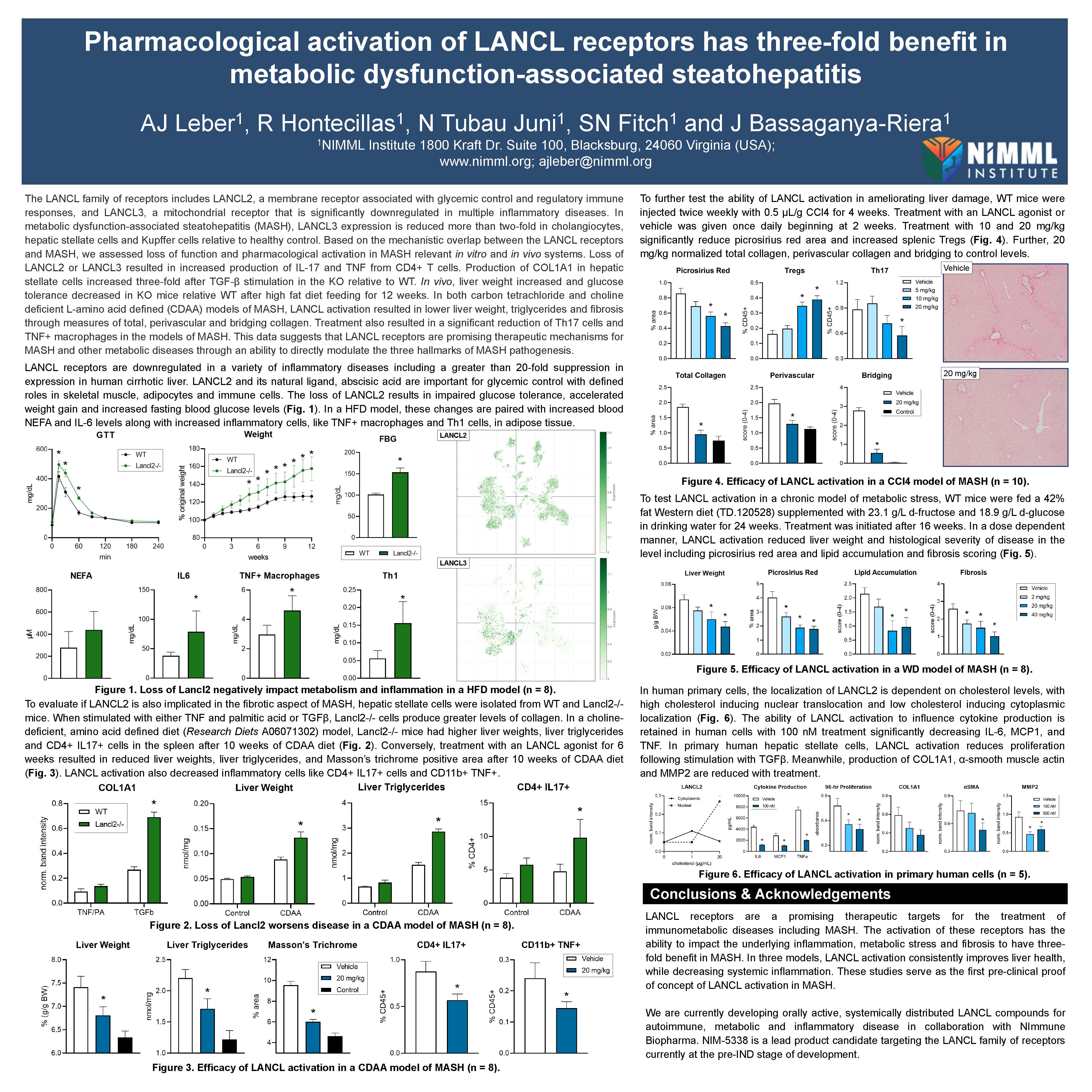Pharmacological activation of LANCL receptors has three-fold benefit in metabolic dysfunction-associated steatohepatitis
The LANCL family of receptors includes LANCL2, a membrane receptor associated with glycemic control and regulatory immune responses, and LANCL3, a mitochondrial receptor that is significantly downregulated in multiple inflammatory diseases. In metabolic dysfunction-associated steatohepatitis (MASH), LANCL3 expression is reduced more than two-fold in cholangiocytes, hepatic stellate cells and Kupffer cells relative to healthy control. Based on the mechanistic overlap between the LANCL receptors and MASH, we assessed loss of function and pharmacological activation in MASH relevant in vitro and in vivo systems. Loss of LANCL2 or LANCL3 resulted in increased production of IL-17 and TNF from CD4+ T cells. Production of COL1A1 in hepatic stellate cells increased three-fold after TGF-β stimulation in the KO relative to WT. In vivo, liver weight increased and glucose tolerance decreased in KO mice relative WT after high fat diet feeding for 12 weeks. In both carbon tetrachloride and choline deficient L-amino acid defined (CDAA) models of MASH, LANCL activation resulted in lower liver weight, triglycerides and fibrosis through measures of total, perivascular and bridging collagen. Treatment also resulted in a significant reduction of Th17 cells and TNF+ macrophages in the models of MASH. This data suggests that LANCL receptors are promising therapeutic mechanisms for MASH and other metabolic diseases through an ability to directly modulate the three hallmarks of MASH pathogenesis.

